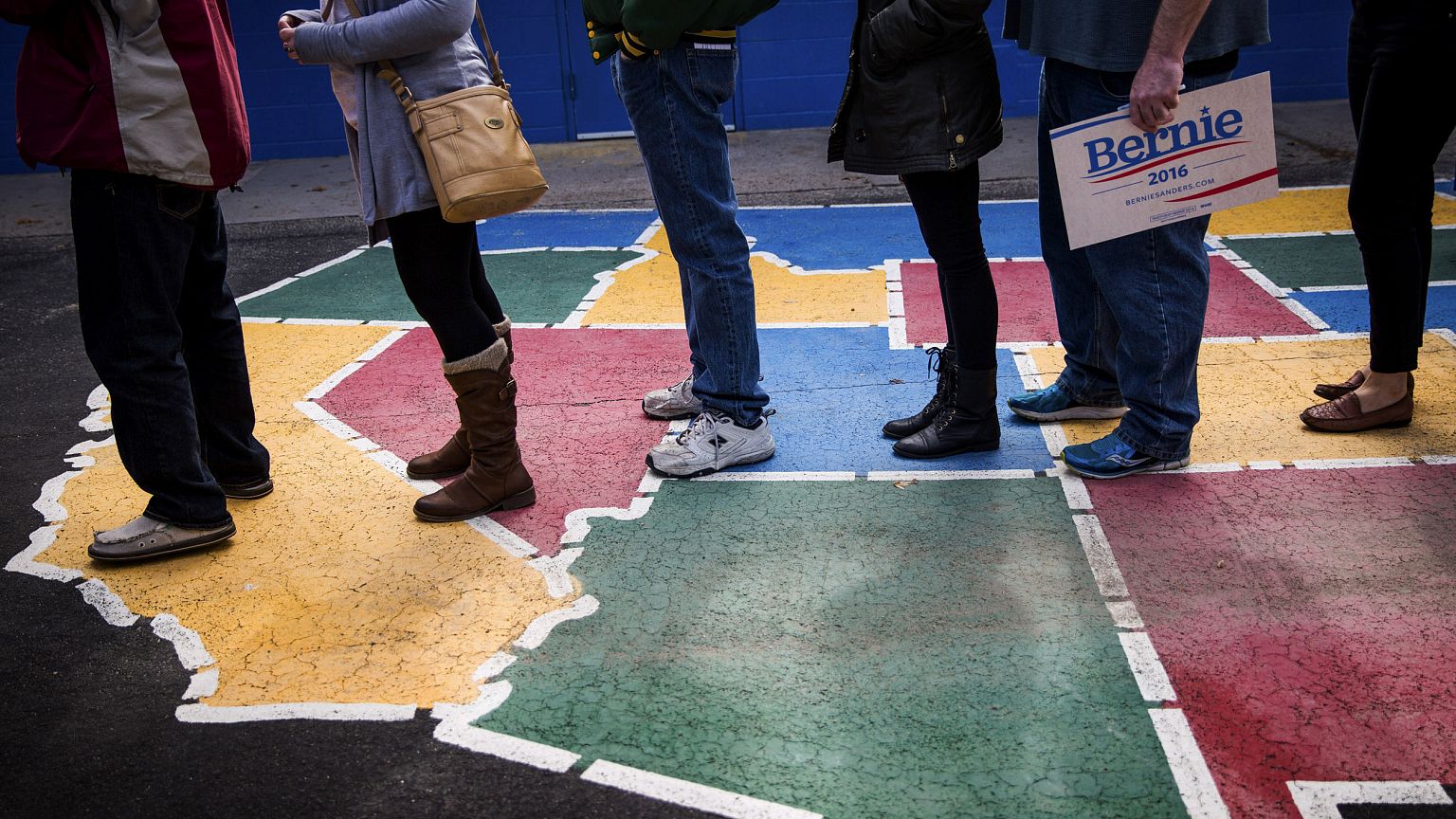Democratic presidential hopefuls face their first test in a state with a significant non-white segment of its electorate.
The Nevada caucuses are around the corner, as Democratic presidential hopefulsface their first test in a state with a significant non-white segment of its electorate.
Tens of thousands of Nevadans have already voted early, but the rest will head to almost 2,100 caucus sites across the state Saturday to make their choices.
Here's what you need to know:
When are the Nevada caucuses?
Saturday, Feb. 22. Check-in begins at 1 p.m. ET/10 a.m. PT. The actual call to caucus is at 3 p.m ET/12 p.m. PT.
Who participates?
Any eligible Nevada voter who will be at least 18 years old on Election Day 2020 can participate. Voters can caucus only for the party that matches their voter registration, but they are allowed to both register or change party affiliations at their caucus or early-vote site.
What has turnout looked like traditionally?
Democratic turnout in 2016 was about 84,000, significantly lower than the 2008 turnout of about 118,000. However, the state party participated in early voting for the first time this year; 36,000 people voted during the first three of the four days.
Where does it all happen?
In total, there are 2,099 Nevada precinct caucuses, but many of them take place at the same caucus site. There are 252 sites throughout the state, and many hold multiple precinct caucuses at the same time.
Some of those precincts might have only a handful of registered Democrats, but because Nevada has same-day registration, a caucus must be available in every precinct, even if no one shows up.
What about early voting?
There was an early voting window from Feb. 15 through Feb. 18. To vote early, a voter had to travel to one of the 82 early-vote locations, provided it was in the county in which they were registered. There was also one 24-hour early-vote site (at the Bellagio Hotel on the Las Vegas Strip) and several late-night locations for those who work odd hours in the Strip area. Read more about them here.
Early voters marked their first choice and at least two additional choices (up to four additional on top of their first choice) so their votes can be realigned if their top choices are not viable.
Early votes will be routed to the voter's home precinct on Caucus Day, so voters will be counted alongside their neighbors. That's different from Iowa, where the results of the "satellite caucuses" were counted as separate events.
How many Democratic delegates are at stake?
There are 36 pledged national Democratic convention delegates, plus an additional 12 unpledged national Democratic convention delegates (superdelegates) from Nevada.
Out of the pledged national convention delegates, 23 are doled out proportionally based on congressional district results, while the remaining 13 are allocated proportionally based on the total statewide result.
Candidates have to hit the 15 percent threshold both statewide and in congressional districts to receive a share of those delegates.
How does the caucus work?
Democrats in Nevada caucus in much the same way as Democrats in Iowa. Caucusgoers move around the caucus site, gathering in groups corresponding to the candidate that they support.
At most locations, candidates must have support from at least 15 percent of caucusgoers in each precinct to be considered viable. Once all the attendees finish their first alignments, those with candidates who have reached viability are locked and cannot change their preferences. Those who are with nonviable groups (either a candidate or uncommitted) can realign with a viable group on a second alignment.
With those results, a formula awards delegates to viable candidates by precinct.
Is there an app for that?
After the chaos at the Iowa caucuses early this month, Nevada officials did away with the idea of reporting results through an app. There are three ways caucus volunteers can report results: by phone, iPad or paper.
How will we get the results, and what will they look like?
Unlike in previous years (but similar to this year in Iowa), the party will also be releasing more data both at the media filing center and on the party website:
- The raw vote numbers from the first and final alignments.
- The total number of early voters who participated in each precinct.
- The total turnout in each precinct.
- The total number of county convention delegates won by each candidate at each precinct. (As with Iowa, this is the metric NBC News will rely on to determine the "winner" of the caucuses.)
In addition, after all the results are in, the party will release the allocation of national delegates.
As in Iowa, different candidates could finish with the lead in raw votes and delegates if margins are tight or if there's significant realignment. But the delegate race is the only one that explicitly helps decide the party's nominee.
In previous cycles, the Nevada rules allowed candidates to try to sway delegates to defect at local conventions, divorcing the caucus results from the ultimate delegate allocation. But now, the proportion of national delegates awarded to each candidate will be locked in on caucus night.
What if there's a tie?
If, after the delegate math is done, two or more candidates are still tied (to four decimal places) in a way that affects how the delegates are awarded, that triggers a game of chance.
Rules dictate that candidates draw playing cards to break the tie. High card wins, aces high, with a tie defaulting to the suit in the following order (spades, hearts, diamonds and then clubs). The outcome depends on the tie that needs breaking, but either the candidate with the high card will have the result rounded up or the candidate with the lowest card will have the result rounded down.
There are also special cases for rounding (for example, if a viable group is on the verge of losing its only delegate through rounding).
When should we expect to start hearing results?
The party says it should start getting precinct-level data within an hour of the call to caucus, making 4 p.m. ET likely the earliest to get any partial results.
After the Iowa caucuses, the state party said it would not use an app at all and would instead rely on the redundant reporting systems it has already developed.
What about the Republicans?
The Republican caucus process this cycle is far easier to digest. The party isn't having caucuses at all — the state GOP decided to opt out of the caucus process entirely. Instead, party officials will meet later to endorse and bind all their delegates to President Donald Trump.















